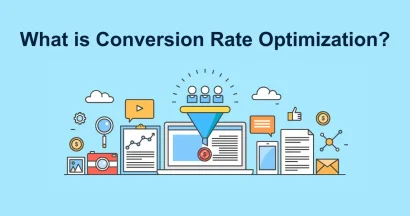When outsourcing your project to a remote Software Development team, you should know what specialist you need to hire and what you should be paying. Understanding your augmented teams’ roles and responsibilities will help you execute the project better, and save effort, time, and cost in the long term.
Many methodologies are used in Software Development: Agile, Waterfall, Feature-driven Development, Extreme Programming, Lean, etc. Agile is the most popular and is used in more than 80% of cases. So, most probably, when you engage in a Software Dev project with a remote firm, they will handle the project’s development in an Agile way. Also, there is not much variation between roles per the different methodologies, so this article should still help.
Traditional Vs. Agile Software Development

Traditional Development Software process emphasizes linear development: planning, documentation, development, testing, and closure. Under traditional development requirements, scope, tools, and techniques stay fixed. Here time and budget can vary, and because of these reasons, the project can often have either time or budget issues.
The benefit of traditional development includes clearly defined objects, defined processes, detailed documentation, and accountability.
The Agile Software Development method focuses on teamwork, collaboration, time boxing of tasks, and adaptation to change. Agile follows an iterative process of development where the project is divided into two weeks sprints. It prioritizes interaction over planning and working software over documentation.
The benefit of Agile development includes predictable delivery, predictable cost, flexible prioritization, improved quality, and transparency.
So, from a Team’s point of view, Agile teams are more self-managed and enjoy a lot of autonomy. And because it is a process-driven development, the Scrum structures ensure better quality software and a faster pace.
Why Software Development Defined Role and Responsibilities?
At the outset, the Developing Software process looks straightforward. You have a project idea and search for a Software Development company. You tell them your vision, and they start the development. The designer creates a design, the software developers develop it, and the QA engineers do the quality testing. The solutions get deployed, and you have your product. Is that simple?
Now think, what happens when the product delivered is not the exact product you had asked for? Who was supposed to understand your requirements? Who was responsible team’s understanding of the project? And who was responsible for communication with the stakeholders? Who was supposed to set up the environment? Who was supposed to define done? Suddenly, there are a lot of roles and responsibilities to be clarified. So how do you know, who all you need, and who will do what?
Clearly defined roles and responsibilities become more critical when working with a mix of in-house and outsourced Software Development teams. It will increase the project’s chances of success and let you know the performance and efficiency of individual team members.
If you’re looking for a software developer job, please check Jooble.
Deep Dive into Roles and Responsibilities of Software Development
Though most software companies claim to be fully Agile, there is a long way to go. I have seen most of the company’s developing software in a hybrid model intending to release software in small chunks, which also does the job well.
Project Manager – Software Development
A project manager handles the implementation of the project through all the stages of the Software Development Life Cycle. These phases cover requirement gathering, stakeholder management, and constraints management, including scope, budget, risks, resources, and quality. In a nutshell, he is responsible for overseeing the delivery process from discovery to deployment.
A project manager works closely with the Executive team for strategic planning. The project manager also ensures that the team performs and delivers the product as per the defined scope. He handles supporting the team through iteration and shields them from distractions. A project manager is responsible for client success because of his understanding of the technical elements and the business side of the project.
The responsibilities of a project manager include interpreting business and technical needs, ensuring collaboration and communication, team motivation, coaching, addressing internal and external risks, facilitating difficult discussions, and deriving successful project delivery.
Product Owner – Software Development
This role is sometimes also referred to as SME or subject matter expert. Sometimes business analysts take this role for smaller projects; however, it is of tremendous help to involve a product owner from the start for medium to complex projects.
In most projects, clients keep this role in-house because these professionals need to have deep knowledge and experience in a particular domain or industry. They work as a consultant for the Software Development team.
Lack of technical expertise is considered a strong point for this role as it helps them focus on project outcomes from a business and user experience perspective.
Team Lead – Software Development
This role is again more common in medium to complex-size projects. They are the ones who lead the project on a day-to-day basis. In smaller-sized projects, a senior developer takes this role.
Team leads are responsible for smooth communication among team members as well as clients, and the team. Team leads are also responsible for team performance and conflict prevention and management. Other responsibilities include code review, providing feedback, facilitating sprints, and eliminating blockers.
Business Analyst – Software Development
In our experience, most of the clients have a fair idea about what they want to get developed from a business standpoint. However, they still need to translate the business requirements into technical requirements. It is where business analysts play their role.
They start with business analysis, technical analysis, market research, and documentation. Other responsibilities include creating a project scope, a software requirement specification document, a road map with milestones, and effort estimation.
You always want to start with a business analyst, which means spending a few days to a few weeks depending upon the size of the undertaking. It will help you clear the project understanding to the augmented team. Business analysts, project managers, and software architects define and refine your software solution’s features, clarify project vision, and even check the product-market fit.
The deliverable of a business analyst is a business requirement document that includes a problem statement, use cases, and business drivers. Key responsibilities of a business analyst include leading communication, identifying opportunities and strengths, creating documentation, finalizing goals, and aligning Software Development with the project vision.
Solution Architect
You are an entrepreneur, so it is perfectly okay not to have a detailed understanding of the technical world. The solution architect role is the most effective in these cases. This person is like the tech brain behind the project. Good solution architecture is a must for scalable software projects.
The solution architect’s role is to define the best technical architecture for your application. It includes determining the Software Development methodology, high-level design diagrams, development environment, coding standards, tech stack, tools, platforms, libraries, frameworks, compliance, security standards, and performance acceptability criteria.
Though a senior developer can sometimes take on this role for small-sized projects, you need to involve a solution architect for medium to complex projects. The deliverable of a solution architect includes creating a system design document, block diagram or architectural diagram, programming guidelines, and iteration stages.
UI/UX Designer
UI/UX Designer is one of the primary roles you need in any project, irrespective of project size. As you know, the first impression counts; this role helps you design your application. In many projects, the involvement starts at the pre-sales phase with low-level designs and wireframes.
UI/UX designers are responsible for turning your project visions into a beautiful-looking, intuitive, and user-friendly application, that your customers love, and compels them to take action.
The key deliverable of a UI/UX designer includes creating the design guidelines, brand elements, flowchart, wireframe, and a clickable prototype. UI/UX Designer plays a vital role in product success. They may finish most of the work before development happens. However, they must be involved in implementing feedback, assessing product design performance, and introducing UI fixes.
Software Developer
Back-end developers also referred to as developers or coders, are indispensable for any software project. Their role is to translate functional, nonfunctional, and technical requirements into working software by writing clean code as per the coding standards.
We classify software developers from software companies in Ohio into three categories, front-end developers, back-end developers, and full-stack developers.
Front-end Developers
As the name suggests, fronted developers are responsible for developing the client side of the application, which means the part of software users see and interact with. The front end is also like a presentation layer, including navigation, buttons, design layout, widgets, and animations. They closely work with the design team to ensure an enjoyable experience for the application users.
Backend Developers
To clarify, back-end developers are responsible for developing the application’s server side, which means working on the data access layer, logic, rules, permission, servers, and databases. They are responsible for application functionality, performance, security, and event, ensuring that different components of an application interact smoothly.
Full-stack Developers
A full-stack developer is relatively a new role because of the advancement in technology, complexity, and expectation. It is because of business demand, and sometimes it is because of technology.
A full-stack developer works on both the client side and server side of the application. With the emergence of this role, the fine line between a front-end developer and a back-end developer is becoming blurred because more and more client needs experts who could see the complete picture.
The primary responsibilities of a front-end developer include developing the front end of the application, designing interactions, developing server-side logic and functionalities, creating databases, ensuring cross-platform optimization, and executing the project from concept to delivery.
QA Engineer
Involving a quality assurance and testing expert from the project start increases the success rate. To clarify, they are responsible for building proper test plans, maintaining test cases, and implementing quality control on the project.
So, we classify QA engineers into manual QA engines and QA automation engineers.
Manual QA Engineers
In one sentence, manual QA engineers are responsible for ensuring the application is bug-free and meet the technical and business requirements.
Also, manual QA engineers primarily work with a project management tool like JIRA for bug tracking and test management. Their role includes analyzing each released build and reporting bugs for performance, security, configuration, usability, and all other aspects of variation in Software Development to the acceptable scope.
In short, their responsibilities include writing test cases, code quality reviews, test documentation, and rechecking fixed bugs.
QA Automation Engineer
A QA automation engineer’s central role is to write scripts that could run in the background and check the application for bugs and other errors. It also helps ensure that implementing a new fix has not broken anything that was previously running smoothly. They create environments for automated retests.
In addition, automation testing becomes cost-effective in big size and highly complex projects. At the same time, you can still go away with manual testing for more straightforward small-size projects.
Conclude
Often, an outsourced Software Development project can go overboard with budget or schedule because of the lack of segregation of roles and responsibilities. It becomes a more significant challenge to tackle if you work in a hybrid environment of in-house and outsourced teams. Check Hyperlink InfoSystem review by top app development company’s platforms.
Read More: A Complete Guide To Develop iOS App Development
Contact US | ThimPress:
Website: https://thimpress.com/
Fanpage: https://www.facebook.com/ThimPress
YouTube: https://www.youtube.com/c/ThimPressDesign
Twitter (X): https://twitter.com/thimpress


